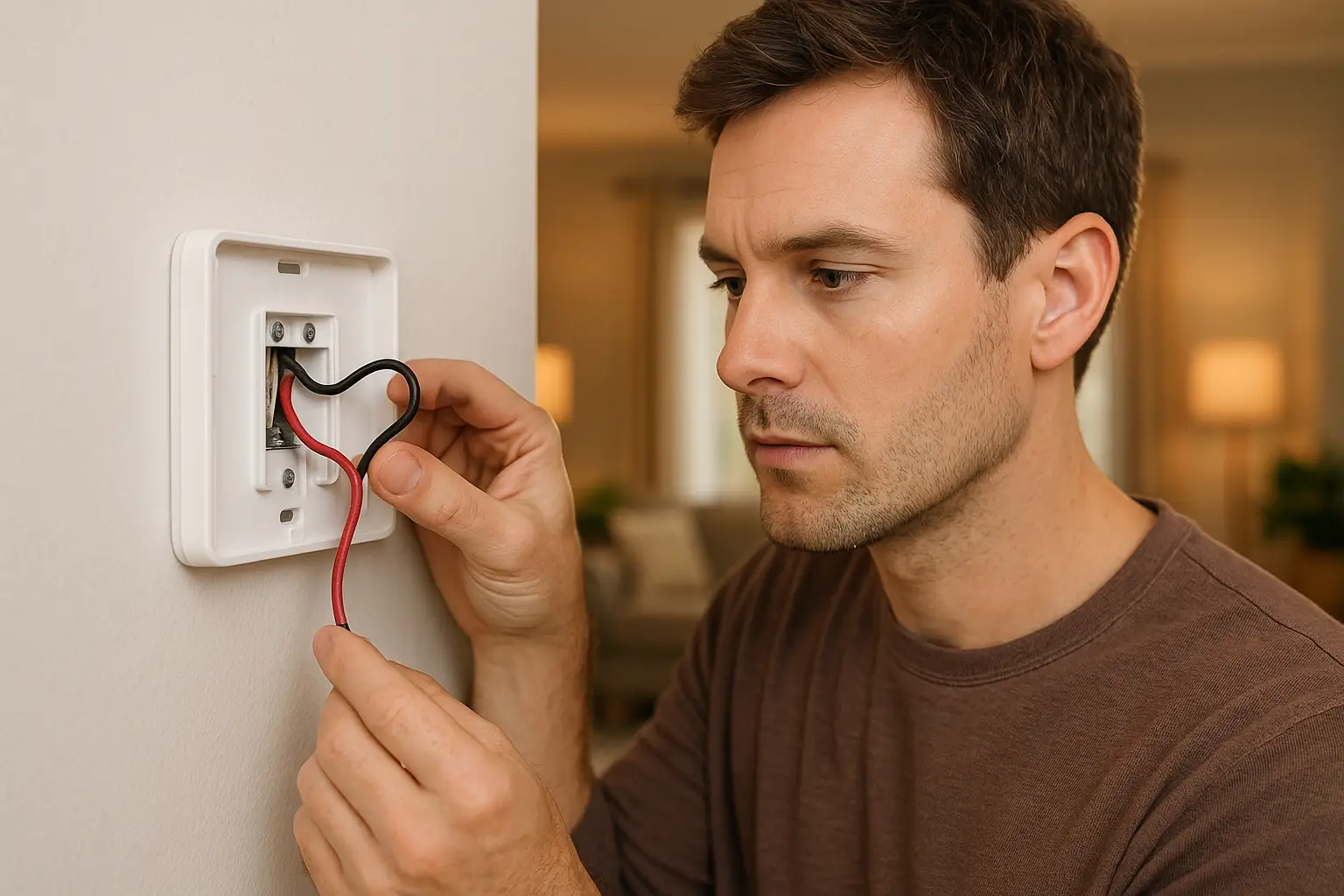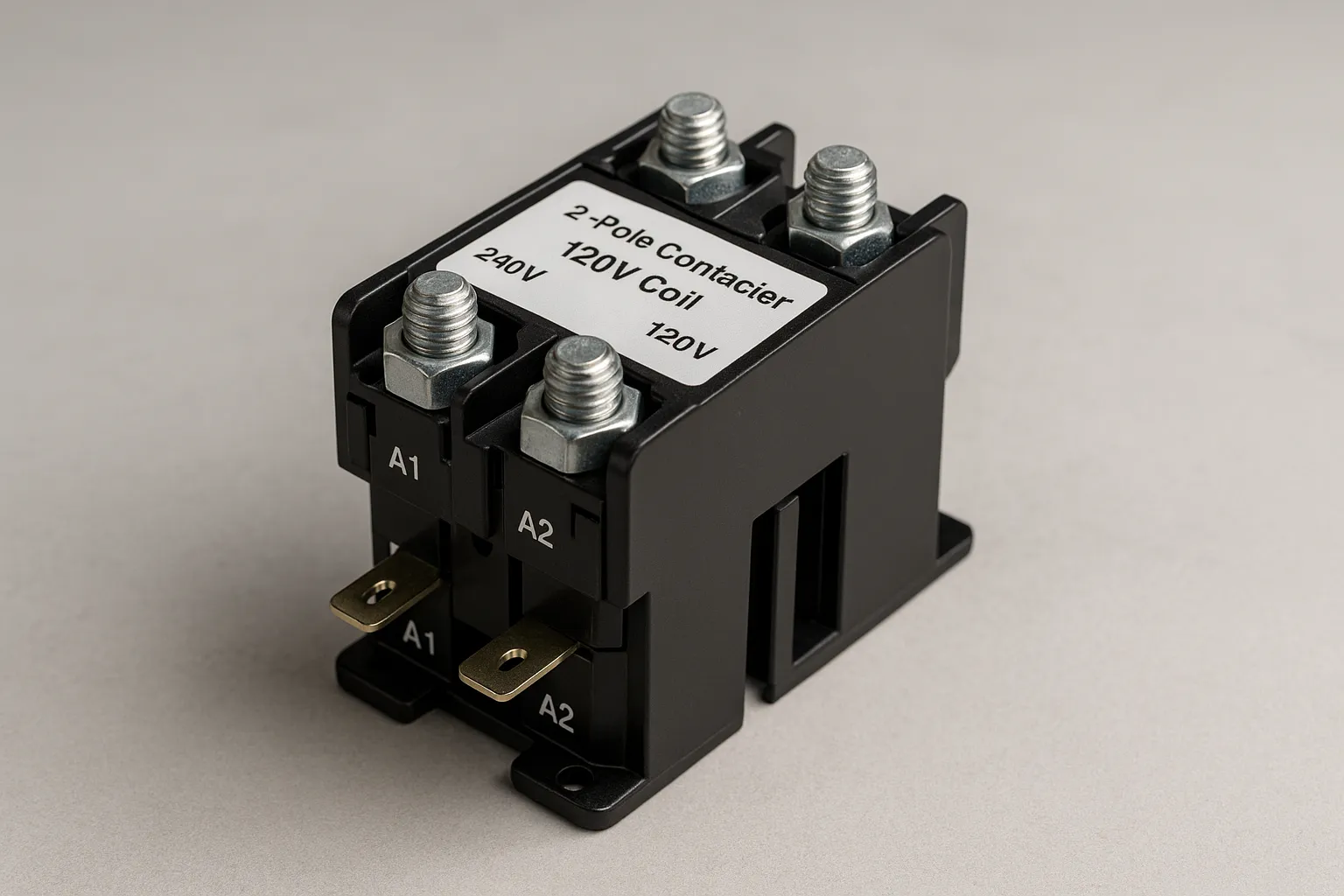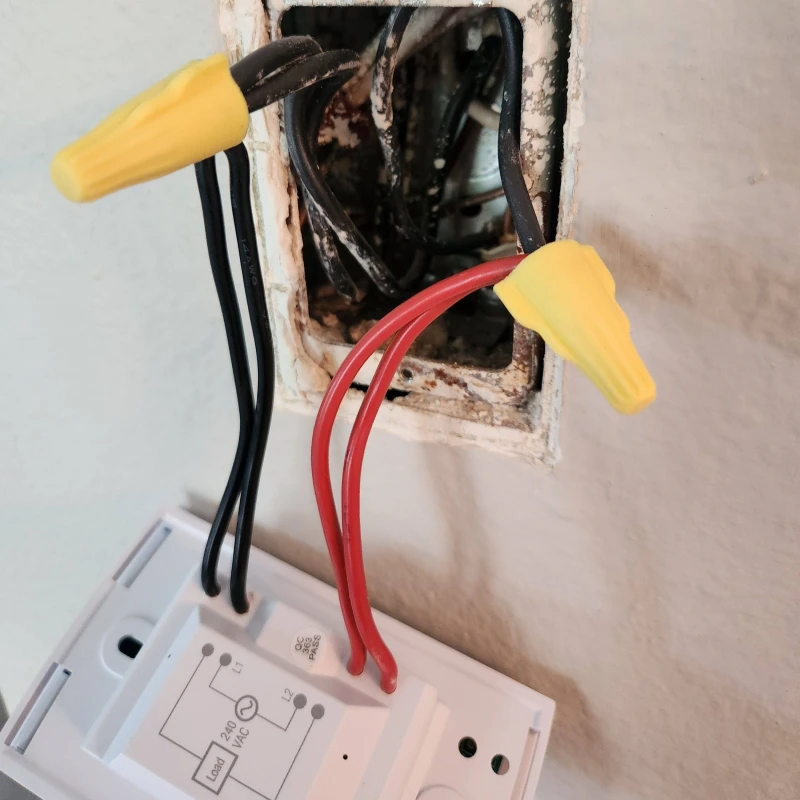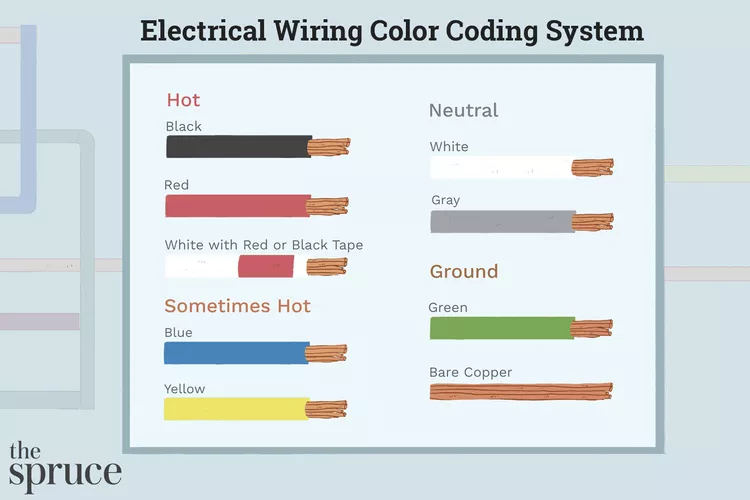You’ve just decided to make your home heating smarter.
Maybe you want a thermostat you can control from your phone, or you’re tired of guessing when to turn the heater off.
Then you open the wall plate—
and find two thick wires staring back at you.
No “C” wire. No “neutral.”
Just black and red, or maybe black and white.
If that sounds familiar, you’ve met one of the most confusing parts of home heating upgrades:
line voltage wiring and relay power supplies.
Let’s break it down in plain English.

What “Line Voltage” Really Means
Most homes in North America use two kinds of thermostat systems, depending on what type of heater they control:
| Type | Voltage | Typical Systems | Wire Size | Example |
|---|---|---|---|---|
| Low Voltage (24 V) | 24 volts | Central HVAC, heat pumps | Thin, multi-colored wires | Ecobee, Nest, Honeywell |
| Line Voltage (120–240 V) | Household power | Electric baseboard, radiant floor | Thick wires, usually black/white or black/red | Mechanical or smart line-voltage thermostats |
If your thermostat connects to thick wires and controls electric baseboard or radiant heat, it’s almost certainly line voltage.
That means the wires are carrying the same electricity that runs your outlets—120 or 240 volts, not the safe little 24 volts used in most smart thermostats.
Why This Matters for Smart Thermostats
Here’s the catch:
Most popular smart thermostats (Nest, Ecobee, etc.) are designed for low-voltage systems.
If you connect them directly to line voltage, they’ll be instantly damaged — like plugging your phone into a clothes dryer outlet.
That’s why so many homeowners get stuck halfway through an installation, wondering why nothing matches.
So what can you do if your heater runs on 120 or 240 volts?
You have two safe paths forward:
- Add a relay or contactor between your thermostat and heater, or
- Use a thermostat built for line voltage systems.
The Role of a Relay Power Supply
Let’s talk about the first option: using a line voltage to thermostat relay power supply.
A relay (also called a contactor) is basically an electric switch controlled by your thermostat.
It allows the thermostat to “tell” your high-voltage heater when to turn on, without directly carrying the dangerous current.
Think of it like this:
Your thermostat gives the command; the relay does the heavy lifting.
When the thermostat sends a small signal, the relay’s coil energizes and closes the circuit that powers your 240 V heater.
When the thermostat turns off, the coil releases, and the heater circuit opens again.
This keeps your smart control system safe, isolated, and code-compliant.

When You Actually Need a Relay
Not every line-voltage setup needs a relay.
Here’s how to tell.
- If your circuit provides 120 V with a neutral wire (black = hot, white = neutral), many electronic line-voltage thermostats can connect directly.
- If your circuit is 240 V with two hot wires (black and red, no neutral), the thermostat itself can’t run on that power.
You’ll need a relay or contactor with a 120 V coil to bridge the two.
In other words:
No neutral wire = needs a relay.
This setup lets the thermostat use standard 120 V power while safely switching the 240 V heater circuit through the relay.
How to Identify Your System Type
Before doing anything, it’s worth checking what you actually have.
A few quick clues can save hours of confusion.
- Check your breaker panel.
- One switch → likely 120 V circuit.
- Two tied switches → 240 V circuit.
- Look behind your thermostat.
- One black + one white wire → 120 V (neutral present).
- One black + one red wire → 240 V (no neutral).
- Use a voltage tester or multimeter (if you know how to safely).
- 120 V between black and white → direct connection possible.
- 240 V between black and red (no neutral)→ use a relay setup

If you’re unsure, turn off power at the breaker and call an electrician.
It’s not worth guessing when 240 volts are involved.
Typical Wiring Example
Let’s walk through a simplified example.
You have a 240 V baseboard heater and want to use a modern thermostat that runs on 120 V power.
Here’s what happens:
- The thermostat takes power from a 120 V line (hot + neutral).
- Its output terminals send power to the coil of a 2-pole relay rated for 120 V.
- That relay switches the two 240 V wires that go to your heater.
Result:
- The thermostat controls the heater indirectly.
- The heater gets its full 240 V power safely.
- The thermostat stays powered on its 120 V line.
It’s clean, safe, and how professional installers usually handle these upgrades.
Option 2: Thermostats Built for Line Voltage Systems
Now for the second option — and often the simplest one.
Some thermostats are built to handle line voltage directly, meaning they can safely control 120–240 V baseboard or radiant heaters. However, if your 240 V circuit has no neutral, a relay (contactor) may still be needed to power the thermostat’s electronics.
For a quick comparison of control styles and energy savings
See our breakdown of smart vs programmable thermostats →These thermostats connect directly to 120 V circuits and have internal relays rated for the current of typical baseboard heaters (often up to 16 amps).
They still provide digital temperature control, scheduling, and smart-home features, but without needing an extra box in your wall.
If your home already has a 120 V circuit with a neutral line, choosing one of these thermostats can save both wiring work and parts cost.
One example of such a design is the EcoNet-BH, which supports 120 V to 240 V line-voltage heating systems. It powers itself from an L-N supply but can also control 240 V two-hot-wire circuits via a 2-pole contactor when no neutral is available.
But the key takeaway isn’t the model—it’s the compatibility principle:
Match your thermostat to your wiring type, not the other way around.
Key Safety Reminders
- Power off at the breaker before touching any wires.
- Never use the neutral wire as a second hot line — it’s unsafe and not to code.
- Check that your thermostat and relay are rated for the heater’s current draw (amperage).
- Follow local electrical codes (NEC in the U.S.).
- When in doubt, hire a licensed electrician for final connection and inspection.
Smart heating is great—but safety always comes first.
Managing heat efficiently can also help reduce your utility costs
Here’s why winter heating bills are high and what you can do about it →Wrapping It Up
Understanding how a line voltage to thermostat relay power supply works isn’t just for electricians.
It’s for any homeowner who wants to modernize an older heating system safely.
Here’s the short version:
- If you have 120 V with neutral → choose a line-voltage smart thermostat that connects directly.
- If you have 240 V (two hot wires) → you’ll need a thermostat plus a relay (contactor) setup.
- If you’re not sure → check your wiring or consult an electrician before buying anything.
Once you know your system, upgrading becomes simple—and safe.
Smart thermostats can make your home more efficient, but the smartest step of all is knowing what’s behind your wall before you start.
Quick FAQ
Do I need a relay for my line voltage thermostat?
If your heater runs on 240 V and there’s no neutral wire, yes — you’ll need a 2-pole relay (or contactor) with a 120 V coil.
If your system is 120 V with neutral, most line-voltage thermostats can connect directly.
Can I use a smart thermostat made for low-voltage systems?
Not directly. Low-voltage thermostats like Nest or Ecobee are built for 24 V HVAC circuits, not 120 V or 240 V heaters.
Connecting them to line voltage can permanently damage the device.
What’s the difference between a relay and a contactor?
They work on the same principle — a small control signal switches a larger power circuit.
A contactor is simply a heavier-duty relay designed for high-current devices like baseboard or radiant heaters.
Why is a neutral wire important?
Electronic line-voltage thermostats need a neutral line to power their internal display and Wi-Fi functions.
Without it, they can’t operate unless paired with a separate relay circuit.
Is wiring a relay difficult?
It’s mostly about matching terminals correctly: the thermostat controls the coil, and the relay switches the heater lines.
Still, it’s best to have an electrician verify connections for safety and code compliance.
Ready to simplify your heating setup? Explore how a smart heating control system can connect thermostats, relays, and sensors into one efficient network — all manageable from your phone. Learn how to balance comfort and energy savings with the right setup for your home.
Explore Smart Heating Solutions →
Comments
Post a Comment